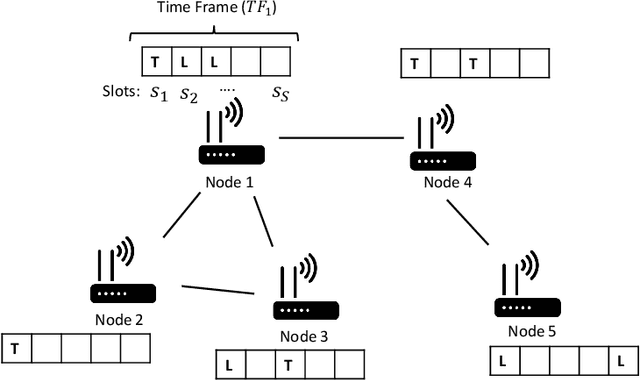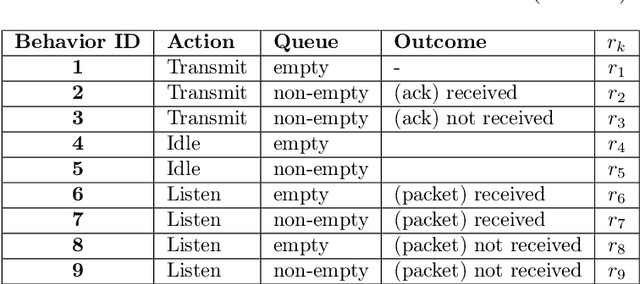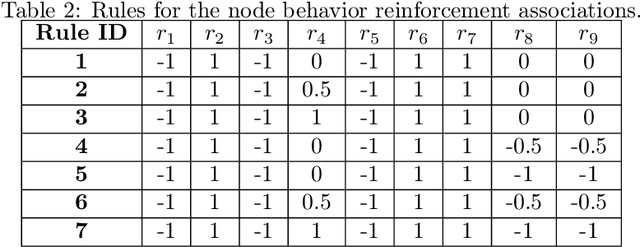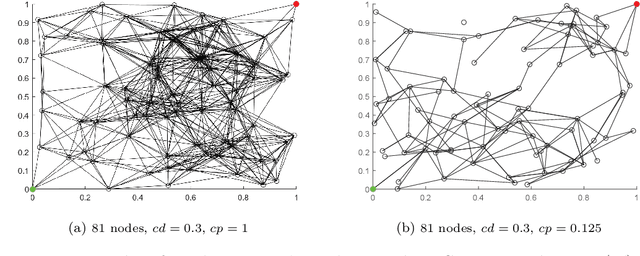Tim van der Lee
Online Distributed Evolutionary Optimization of Time Division Multiple Access Protocols
Apr 27, 2022



Abstract:With the advent of cheap, miniaturized electronics, ubiquitous networking has reached an unprecedented level of complexity, scale and heterogeneity, becoming the core of several modern applications such as smart industry, smart buildings and smart cities. A crucial element for network performance is the protocol stack, namely the sets of rules and data formats that determine how the nodes in the network exchange information. A great effort has been put to devise formal techniques to synthesize (offline) network protocols, starting from system specifications and strict assumptions on the network environment. However, offline design can be hard to apply in the most modern network applications, either due to numerical complexity, or to the fact that the environment might be unknown and the specifications might not available. In these cases, online protocol design and adaptation has the potential to offer a much more scalable and robust solution. Nevertheless, so far only a few attempts have been done towards online automatic protocol design. Here, we envision a protocol as an emergent property of a network, obtained by an environment-driven Distributed Hill Climbing algorithm that uses node-local reinforcement signals to evolve, at runtime and without any central coordination, a network protocol from scratch. We test this approach with a 3-state Time Division Multiple Access (TDMA) Medium Access Control (MAC) protocol and we observe its emergence in networks of various scales and with various settings. We also show how Distributed Hill Climbing can reach different trade-offs in terms of energy consumption and protocol performance.
Quick and Robust Feature Selection: the Strength of Energy-efficient Sparse Training for Autoencoders
Dec 01, 2020



Abstract:Major complications arise from the recent increase in the amount of high-dimensional data, including high computational costs and memory requirements. Feature selection, which identifies the most relevant and informative attributes of a dataset, has been introduced as a solution to this problem. Most of the existing feature selection methods are computationally inefficient; inefficient algorithms lead to high energy consumption, which is not desirable for devices with limited computational and energy resources. In this paper, a novel and flexible method for unsupervised feature selection is proposed. This method, named QuickSelection, introduces the strength of the neuron in sparse neural networks as a criterion to measure the feature importance. This criterion, blended with sparsely connected denoising autoencoders trained with the sparse evolutionary training procedure, derives the importance of all input features simultaneously. We implement QuickSelection in a purely sparse manner as opposed to the typical approach of using a binary mask over connections to simulate sparsity. It results in a considerable speed increase and memory reduction. When tested on several benchmark datasets, including five low-dimensional and three high-dimensional datasets, the proposed method is able to achieve the best trade-off of classification and clustering accuracy, running time, and maximum memory usage, among widely used approaches for feature selection. Besides, our proposed method requires the least amount of energy among the state-of-the-art autoencoder-based feature selection methods.
 Add to Chrome
Add to Chrome Add to Firefox
Add to Firefox Add to Edge
Add to Edge